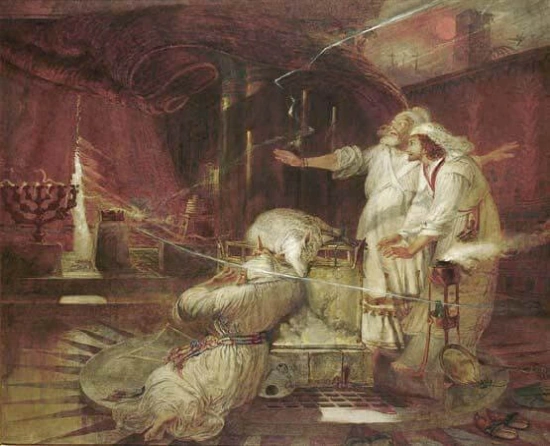5695. 'And he washed his face' means that it took steps to ensure this. This is clear from the meaning of 'washing his face' here as taking steps to ensure that it remained unseen; for Joseph's face was washed, and so steps were taken by him to ensure that his tears remained unseen. The full implications of this will in the Lord's Divine mercy be stated further on; but let something be said at this point about the correspondence of a person's face with his interiors. His face is what is external serving to represent his interiors. For the face has been designed in such a way that a person's interiors may be seen there as if in a mirror that reflects things in a representative fashion; it has been so designed that another may know its owner's attitude of mind towards himself, so that the owner reveals his sentiments when he speaks not only through his speech but also through his face. This was the kind of face possessed by the most ancient people who belonged to the celestial Church, and it is the kind that all angels have. Angels have no wish to conceal from others anything they think, for they think solely of their neighbour's well-being. Nor do they have any thought hidden away which desires their neighbour's well-being for some selfish reason of their own.
[2] But those in hell, as long as they are not seen in the light of heaven, have a face other than the one that corresponds to their interiors. The reason for this is that during their lifetime they bore witness by means of their face to charity towards the neighbour solely for the sake of their own position and gain; they did not desire their neighbour's well being except insofar as it was identical with their own. Consequently the expression on their face is at variance with their interiors. Sometimes that variance is so great that feelings of enmity, hatred, and revenge, and the desire to murder are inwardly present, yet their face is set in such a way that love towards their neighbour is beaming from it. From this one may see how far people's interiors disagree at the present day with their exteriors, and why they resort to those kinds of practices to serve their own interests.








